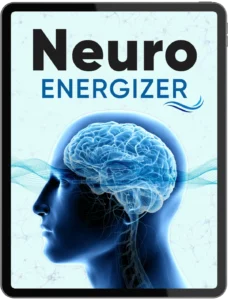Knee replacement surgery is one of the most common and successful procedures for people suffering from severe arthritis, chronic pain, or limited mobility. While surgery itself is a critical step, recovery largely depends on what comes afterward. The movements you make, the exercises you perform, and the consistency of your rehabilitation will determine how quickly and effectively you regain mobility. That’s why understanding the best exercises after knee replacement surgery is essential for every patient who wants to maximize recovery and return to daily activities with confidence.
In this comprehensive guide, we’ll explore why exercise is so important after knee replacement, the most effective exercises for each stage of recovery, and tips for performing them safely.
Why Exercise Matters After Knee Replacement Surgery
The knee joint is one of the most heavily used parts of the body, and after surgery, it needs gentle but consistent movement to heal properly. Skipping exercise can lead to stiffness, muscle weakness, and limited range of motion. On the other hand, performing the right exercises will:
- Improve circulation and reduce swelling
- Prevent scar tissue from limiting movement
- Strengthen surrounding muscles for better joint support
- Restore balance, stability, and flexibility
- Help patients return to walking, climbing stairs, and daily tasks sooner
The best exercises after knee replacement surgery are specifically designed to promote recovery without overloading the joint.
The First Phase: Gentle Exercises Right After Surgery
In the hospital or during the first few days post-surgery, the focus is on circulation and gentle mobility. These exercises should be done under the guidance of a physical therapist.
- Ankle Pumps
- Lie on your back and gently flex and point your toes.
- Helps prevent blood clots and improves circulation.
- Quadriceps Sets
- Tighten the thigh muscle, hold for 5–10 seconds, then release.
- Builds strength in the quadriceps, which support the knee joint.
- Heel Slides
- While lying down, slowly bend the knee by sliding your heel toward your buttocks.
- Improves flexibility and range of motion.
These gentle exercises lay the foundation for more advanced movements later.
The Second Phase: Building Strength and Flexibility
As healing progresses (usually weeks 2–6), patients can gradually increase exercise intensity. At this stage, the best exercises after knee replacement surgery focus on regaining strength, balance, and flexibility.
- Straight Leg Raises
- Lie flat, keep the surgical leg straight, and lift it 12–18 inches off the ground.
- Strengthens quadriceps without putting stress on the knee joint.
- Seated Knee Bends
- Sit in a chair and slowly bend your knee back as far as possible. Hold for a few seconds, then release.
- Enhances knee flexibility and reduces stiffness.
- Standing Heel Raises
- Stand with support, lift your heels off the floor, then slowly lower them.
- Strengthens calf muscles and improves balance.
- Mini Squats (with Support)
- Hold onto a chair or countertop, bend knees slightly, then return to standing.
- Builds strength in thighs and glutes.
The Third Phase: Advanced Strength and Functional Training
Once cleared by a doctor or physical therapist (usually after 6–12 weeks), patients can move toward more advanced exercises. These focus on improving endurance, coordination, and functional mobility.
- Stationary Cycling
- Improves range of motion and cardiovascular fitness. Start with partial rotations before moving to full circles.
- Step-Ups
- Step up onto a low platform, then step down slowly. Repeat with both legs.
- Builds leg strength and mimics everyday activities.
- Side Leg Raises
- While standing with support, lift the leg sideways to strengthen hip muscles that stabilize the knee.
- Resistance Band Exercises
- Use light resistance bands for leg extensions or hamstring curls.
- Adds progressive strength training without high impact.
These are often considered the best exercises after knee replacement surgery for long-term recovery because they prepare patients to return to normal life activities.
Low-Impact Activities for Long-Term Knee Health
After completing physical therapy and rehabilitation, patients can continue with low-impact exercises to maintain knee strength and flexibility:
- Swimming or water aerobics: Gentle resistance and buoyancy protect the joint.
- Walking: Builds endurance and supports joint health.
- Tai Chi or yoga: Improves balance, flexibility, and mindfulness.
These activities are safe and effective ways to keep the knee strong without stressing the joint.
Safety Tips for Exercising After Knee Replacement
Even the best exercises after knee replacement surgery must be done safely to avoid injury. Keep these tips in mind:
- Always follow your surgeon’s or physical therapist’s instructions.
- Start slow and gradually increase intensity.
- Avoid high-impact activities like running or jumping.
- Use supportive footwear to reduce strain on the knee.
- Stop exercising if you feel sharp pain or swelling.
Common Mistakes to Avoid
Many patients delay recovery because they either overdo it or avoid exercise completely. Here are some mistakes to avoid:
- Skipping daily exercises out of fear of pain
- Comparing recovery speed with others
- Ignoring proper warm-ups and cool-downs
- Pushing too hard before the knee is ready
Remember: consistency and patience are more important than intensity.
Final Thoughts
If you’re recovering from knee replacement surgery, exercise is your most powerful tool. The best exercises after knee replacement surgery are not about pushing your limits but about gradually restoring mobility, strength, and confidence. From gentle ankle pumps to advanced step-ups and cycling, each movement plays an essential role in the healing process.
By committing to a consistent exercise routine and working closely with your medical team, you can speed up recovery, reduce pain, and enjoy an active, independent lifestyle once again.




